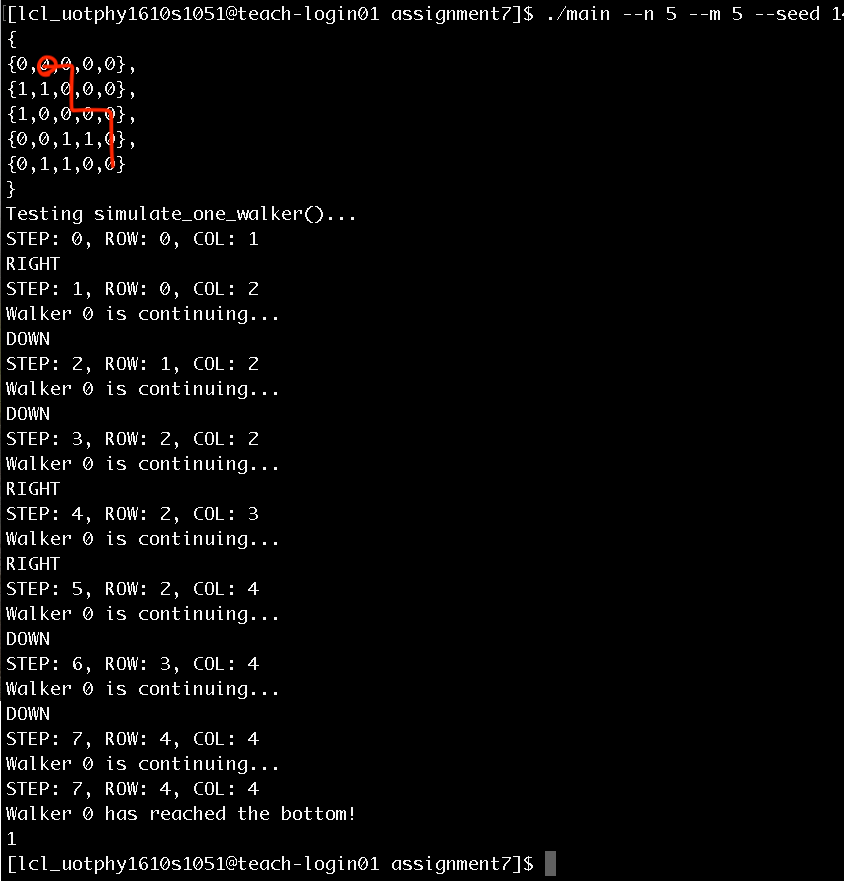- I might be missing something very simple here, but shouldn't the probabilities l,r,u, and d add up to 1? In the current version, I do not think that is the case. Should the actual probabilities be l/z, r/z, u/z and d/z instead?
- Since we are evolving K different walkers, but on the same lattice, do they interact with each other? My assumption is they do not. That is, a single cell can be occupied by more than one walker. In other words, a walker will not be affected by the presence of another walker.
1. You are right, what was meant was that z is to be chosen such that l+r+u+d is equal to 1.
2. All walkers should be independent, without interaction.
2. All walkers should be independent, without interaction.
Is it okay if we did not normalize the probabilities by z, since the ratios of l, r, u, and d will be the same? In my code I just generated a random number on the range [0,z) rather than [0,1) when choosing a direction, and my walkers seem to be behaving properly (the image shows a demo for a small lattice).

Haven't looked at the details, but yes, it they are not normalized but you draw a random number from 0 to l+r+u+d it will have the same effect.
